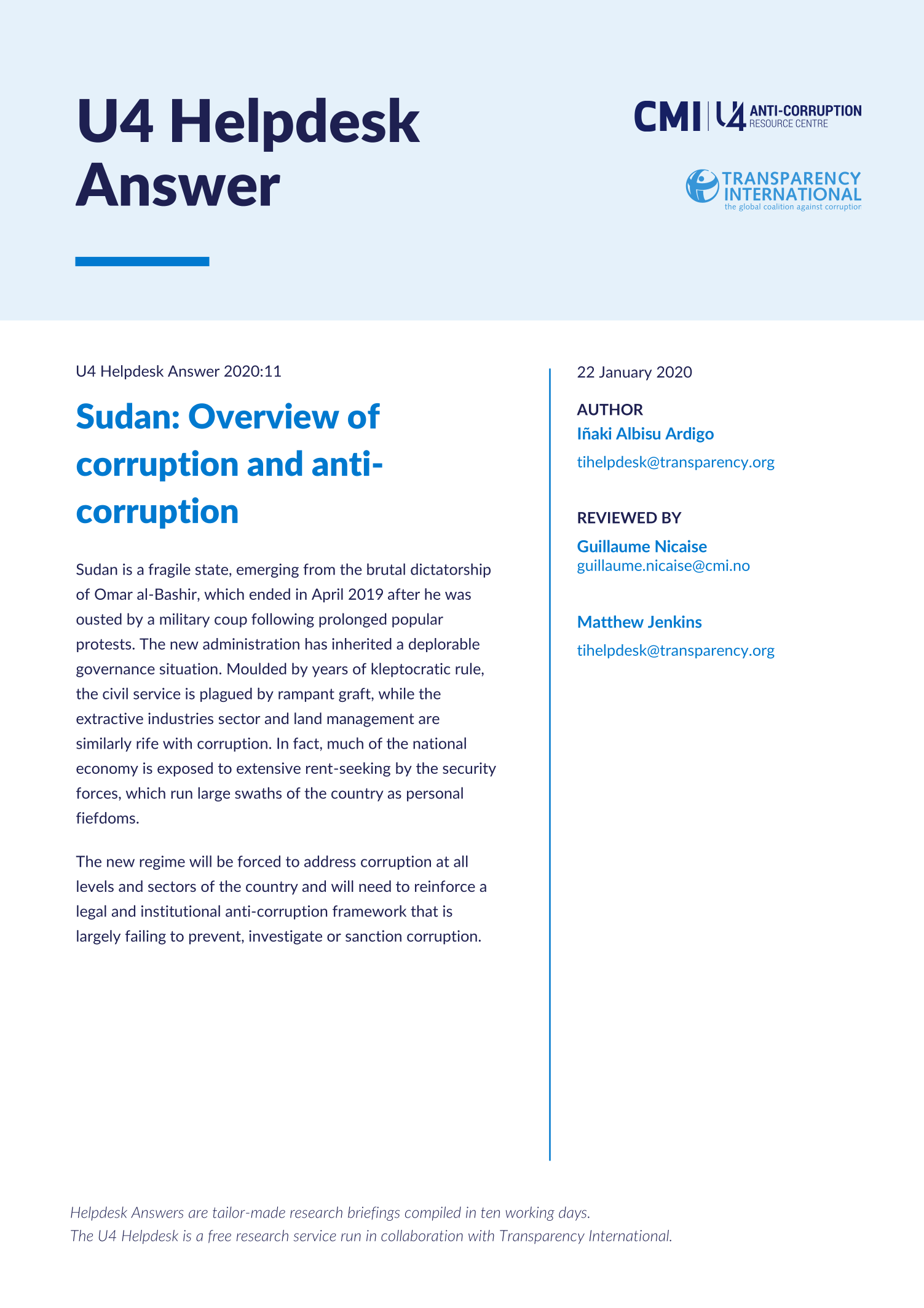A more recent publication is available:
Main points
- After 30 years of authoritarian rule, Omar al-Bashir was deposed in 2019 and a new transitional government was established between civilians and the military.
- Sudan under al-Bashir was considered to be a kleptocracy, in which corrupt actors had effectively captured all aspects of policymaking and all areas of the public service as well as the judiciary. The military was a prime beneficiary of the regime and continues to act autonomously with minimal civilian oversight.
- The extractives industry presents a particular governance challenge in Sudan, as rent seeking reduces tax revenues and finances illicit activities.
- Anti-corruption efforts have historically been lax, with existing laws being inadequately implemented.
